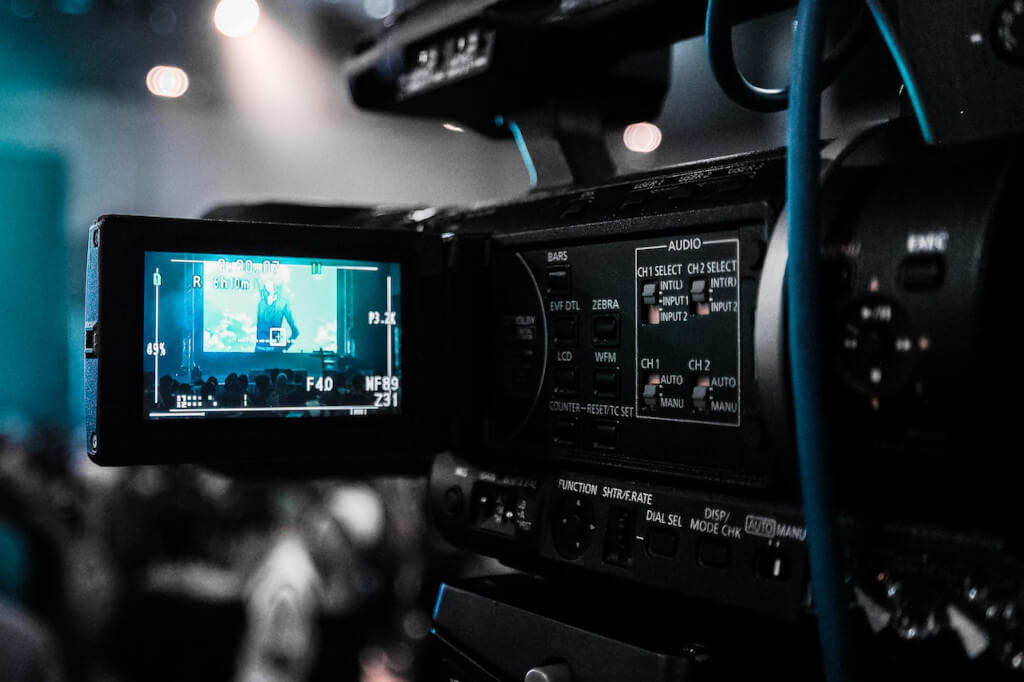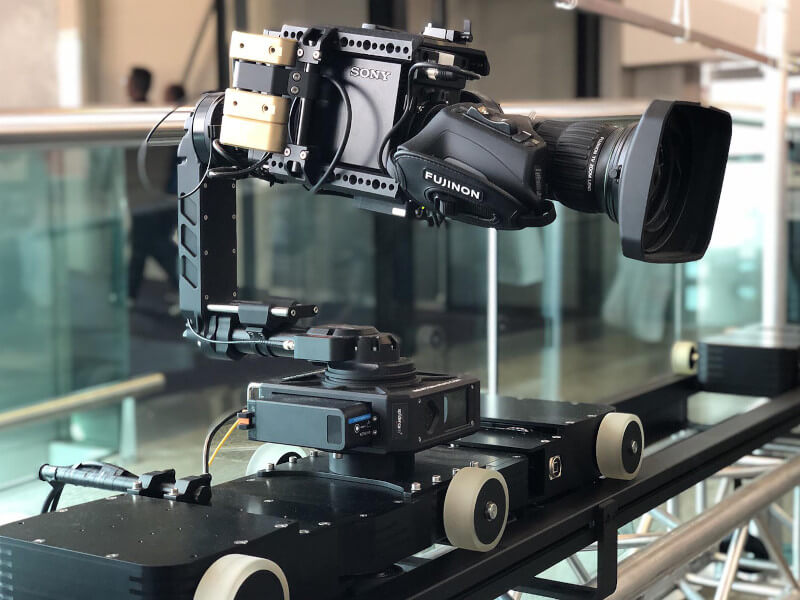
How has the advent of new technology affected the movie business? In a span of fewer than 200 years, the moving picture has gone from being nonexistent to being present everywhere and all the time thanks to the intersection of technological and cinematic advancements. These advancements include the early days of sequential photography, the introduction of sound and color, and the birth of computer-generated imagery (CGI). And why should we stop here?
In this post, we’ll give you a brief introduction to some of the emerging technologies that will be used in filmmaking shortly. As we examine how new film technologies are shaking up the entertainment industry, we will discuss some emerging film technologies that are worth keeping an eye on and investigate how the most recent cinematic technology may alter the way filmmaking is practiced.
Let’s dive in.
Editing of Videos Using Algorithms
Even though the vast majority of technological advancements in the film industry are contentious, the post-production sector is going to be closely linked to the industry’s heritage in the decades to come. The introduction of algorithmic editing in the film industry exemplifies, much like the vast majority of other technological advances in film editing that happened to come before it, the coming together of modern science and the practices of the past.
The process of changing subject matter in conformity with a predefined set of standards is an example of algorithmic editing, which, at the most fundamental level, can be essentially boiled down to the deed of adjusting content. The execution of this plan may be as simple as “swapping from camera A to camera B for two consecutive frames every five frames, and then switching back to camera A.”
The fundamental idea behind algorithmic editing is that a movie will either conform to a pre-planned blueprint or be modified in an explicitly formal way. To explain it in concepts that are simpler to understand, it is a technique that entails slicing the film into pieces and reconstructing it in a manner that is consistent with a structure, prototype, or schema.
3D Printing

The fact that 3D printing is now being used in the movie industry is evidence that technological innovation in the film business does not typically originate in the movie industry.
The concept of three-dimensional printing was once the stuff of science fiction fantasies, but in the 1980s, it started making baby steps toward becoming a practical production and prototype testing. Printing anything from figurines to body part tissues is now possible thanks to advances in this technology.
The movie industry is taking advantage of 3D printing, which is a relatively new method to expand the possibilities of the creation of props, costuming, and other areas. Artists are now able to create 3D objects with a strenuous degree of detail that, if reproduced by hand, would necessitate endless hours of manual effort. This is made possible by the unique advantages offered by this new technology. In addition, the use of 3D printing makes it possible to modify and improve the design of these objects with a minimum of effort.
The ability of 3D printing to save time, cut costs, and increase creative freedom while simultaneously closing the gap between virtual fantasy and physical reality makes it one of the most important film developments in cinematic history. In the rapidly developing field of film production innovation, 3D printing is an instrument that is not only straightforward but also essential.
Real-Time Rendering
Real-time rendering, which is also referred to merely as rendering in real-time, is a process that rapidly generates rendered variants of animations and visuals. The process is so lightning-fast that it gives the perception that the images are being produced in real-time, which is an accurate representation of the situation. The developers of computer games have already been leveraging this new tech for several decades, whereas the developers of building and construction developments are only just starting to catch on.
The large bulk of renderings is digital portrayals of two-dimensional images in three dimensions that are produced on a laptop. Real-time rendering is a process that generates visuals in a manner that is analogous to that used in film production and photography in that it, too, allows the use of light. The rendering method, which is part of the process of generating a frame, can take as short as a few seconds. Rendering in real-time is significantly faster than pre-rendering or rendering that is completed offline, both of which take a great deal more time.
3D Previsualization
If three-dimensional printing is a method for materializing digital concepts, then the recently developed film innovation of three-dimensional previsualization is the antithesis of that process.
Revolutionizing the pre-production procedures, 3D previs (also known as pre-viz) creates completely immersive electronic recreations of the tangible sets or locations that are going to be featured in a live-action production well in advance of the time when the cameras are going to start rolling.
The digital environments of 3D pre-viz give producers the chance to discover and innovate on their own time and without paying additional fees by providing them with the space and resources to do so in a digital setting. The use of 3D previsualization in the film industry enables directors to modify visual designs more, production designers to boost building accuracy, directors of photography to remove the element of the guesswork from implementing technological solutions, and producers to maximize the organizational progression of entire productions. For more information about what producers can offer your film production, visit this page.
In the olden days, 3D previsualization methodologies have been notable for being both expensive and time-consuming. As a result, their use as film technology has been severely limited to only the entertainment groups with the largest budgeting levels. On the other hand, 3D pre-viz is becoming simpler to access than it ever has been before. Its open-ended software and services will inevitably pave the way for progressively innovative and effective purposes in the film production future of technology as it continues to make its way into the public.
Internet-of-Things (IoT)

The rapid growth of online streaming services over the past few years has had a significant and already noticeable effect on the motion picture industry. Even with the benefits afforded by the internet-enabled movie experience, some customers still feel drawn to the massive, broad video monitors that are provided by the cinema experience. This is the case even though the web movie experience has its benefits. The sector is still trying to adapt to this new reality, and it has been discovered that this is the situation.
The term “Internet of Things” (IoT) refers to the concept of connecting different types of technology and the people who use them in a streamlined way to enable smart coordination. It is composed of a network of Individuals, Information, and Processes that facilitates Things, such as the technology found in movie theaters, to be digitally identified and monitored by utilizing the digital facilities that were already in place. There is a possibility that the future of the movie industry can be made clearer by taking a more in-depth look at the Internet of Things. It will be advantageous to nearly all of the various kinds of businesses that are engaged in the entertainment and media sector.
The Camera System

The camera may be the very first piece of technology ever used in the film industry, but it is also the most dynamic. Cameras were once a relatively straightforward device, but as technology has advanced, they have expanded far beyond their original capabilities. Just take into consideration:
Once upon a time, cameras were the size of an entire room, were unable to move, and had extremely restricted capabilities. These days, full motion pictures are recorded on iPhones, and cameras mounted on autonomous drones are so prevalent that you may need to purchase insurance for your drone. Please keep in mind that this describes the movie business as it exists today, not tomorrow.
Designers, producers, and even home-brewed enthusiasts are currently experimenting with the chemistry of photo scientific knowledge to achieve novel and unexpected results. Cameras such as the soon-to-be-released DJI Ronin 4D are merging capabilities and features in ways that many people would have previously thought were inconceivable. These cameras put the versatility of a Steadicam at the fingertips of anyone’s hand and conscript artificial intelligence to grab focus elaborately.
However, we are just getting started here. In the not-too-distant future, new film innovation will likely include, among other things, advancements in computer vision lens new tech as well as radical micro-cameras. The presence of the camera on this lineup exemplifies an unusually persuasive reality:
- There are instances in the film business in which an older piece of equipment ends up being the most beneficial piece of new technology.
Wrapping Up
The movie industry is currently on the cusp of a technological future that is more broad and promising than it has ever been. This list does not even begin to cover all of the technological advancements that are currently being made in the visual entertainment world.
Let us not overlook the developments that have taken place behind the camera. The introduction of new technologies such as simulated production and cutting-edge camera equipment is not the beginning and end of innovation. The methods by which production houses operate have needed an upgrade for years. The tedious process of hiring cast and crew members, making payments, and obtaining insurance should also be improved.
